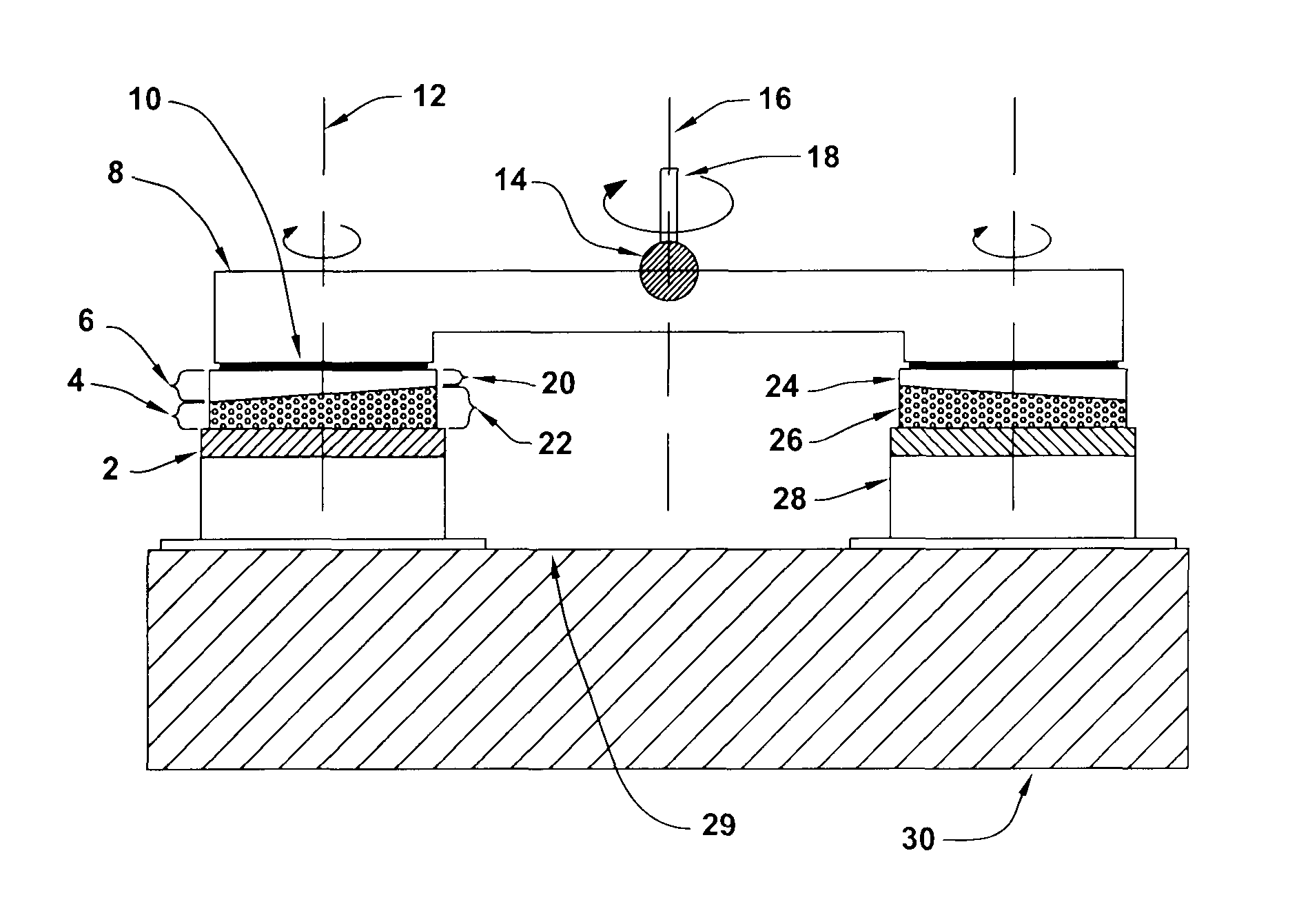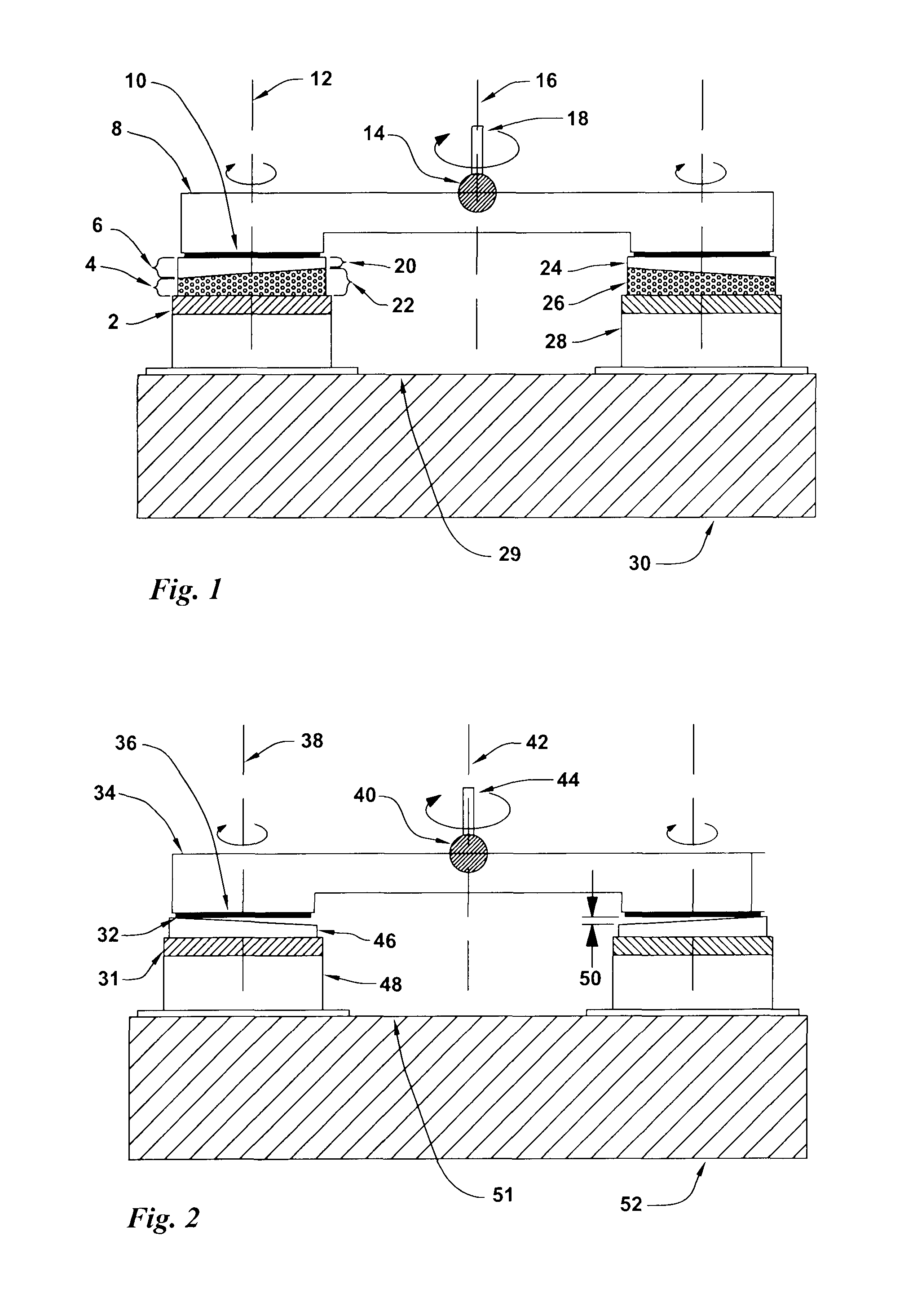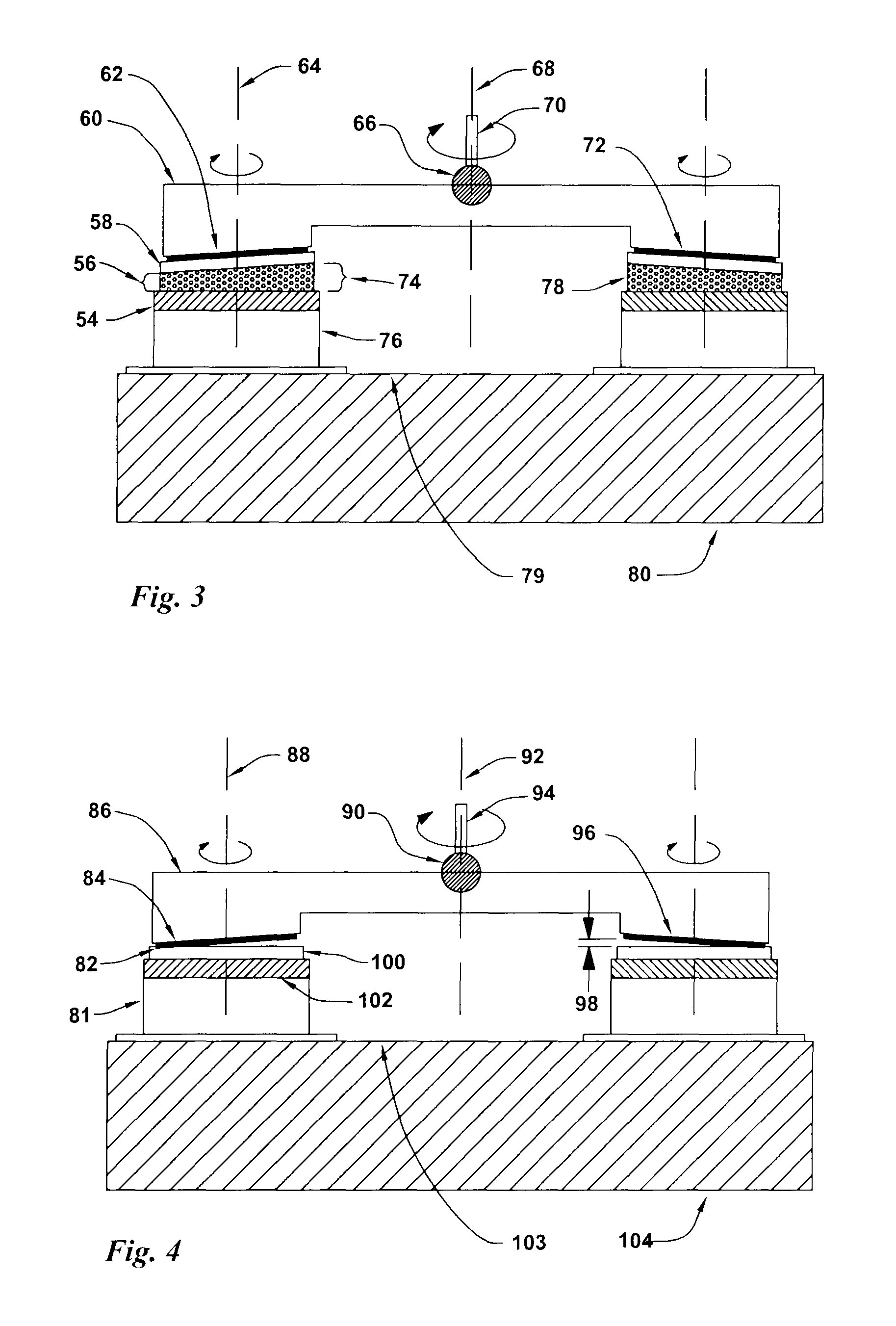Wafer pads for fixed-spindle floating-platen lapping
a floating plate, fixed-spindle technology, applied in the direction of lapping machines, grinding heads, manufacturing tools, etc., can solve the problem of abrading debris being continuously flushed from the abraded surface of workpieces
- Summary
- Abstract
- Description
- Claims
- Application Information
AI Technical Summary
Benefits of technology
Problems solved by technology
Method used
Image
Examples
Embodiment Construction
[0104]The fixed-spindle floating-platen lapping machines used for high speed flat lapping require very precisely controlled abrading forces that change during a flat lapping procedure. Very low abrading forces are used because of the extraordinarily high cut rates when diamond abrasive particles are used at very high abrading speeds. As per Preston's equation, high abrading pressures result in high material removal rates. The high cut rates are used initially with coarse abrasive particles to develop the flatness of the non-flat workpiece. Then, lower cut rates are used with medium or fine sized abrasive particles during the polishing portion of the flat lapping operation.
[0105]When the abrading forces are accurately controlled, the friction that is present in the lapper machine components can create large variations in the abrading forces that are generated by machine members. Here, even though the generated forces are accurate, these forces are either increased or decreased by mac...
PUM
| Property | Measurement | Unit |
|---|---|---|
| diameter | aaaaa | aaaaa |
| flatness | aaaaa | aaaaa |
| flatness | aaaaa | aaaaa |
Abstract
Description
Claims
Application Information
 Login to View More
Login to View More - R&D
- Intellectual Property
- Life Sciences
- Materials
- Tech Scout
- Unparalleled Data Quality
- Higher Quality Content
- 60% Fewer Hallucinations
Browse by: Latest US Patents, China's latest patents, Technical Efficacy Thesaurus, Application Domain, Technology Topic, Popular Technical Reports.
© 2025 PatSnap. All rights reserved.Legal|Privacy policy|Modern Slavery Act Transparency Statement|Sitemap|About US| Contact US: help@patsnap.com



